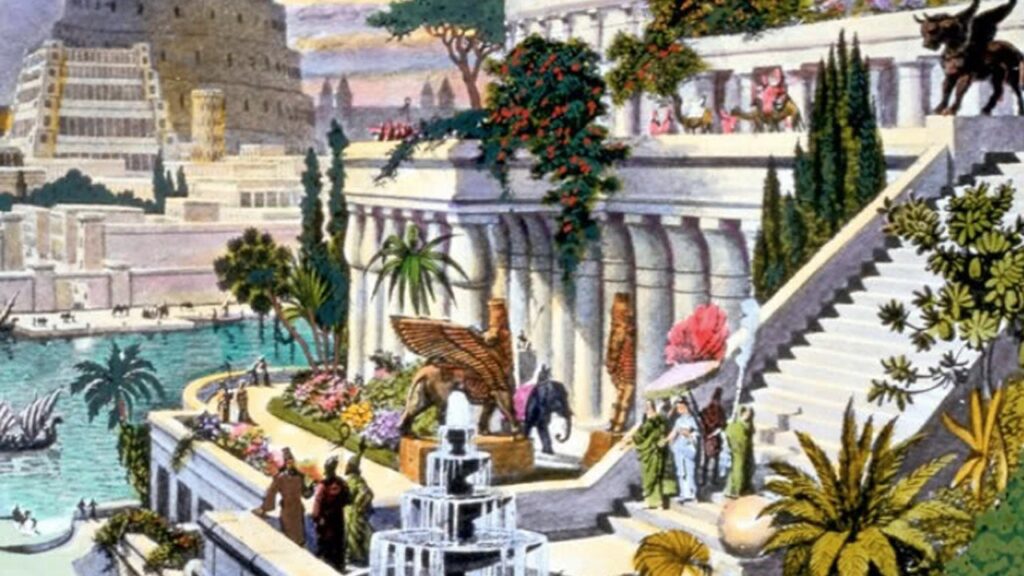
The Hanging Gardens of Babylon, one of the Seven Wonders of the Ancient World, is the only one whose location has not been definitively established.
They were described as a remarkable feat of engineering: an ascending series of tiered gardens containing all manner of trees, shrubs, and vines. The gardens were said to have looked like a large green mountain constructed of mud bricks. Traditionally. they were said to have been built in the ancient city of Babylon, near present-day Hillah in Iraq. The Babylonian priest Berossus, writing in about 290 BC and quoted later by Josephus, attributed the gardens to King Nebuchadnezzar II, who ruled between 605 and 562 BC. There are no extant Babylonian texts which mention the gardens, and no definitive archaeological evidence has been found in Babylon. According to one legend, Nebuchadnezzar II built the Hanging Gardens for his Median wife, Queen Amytis, because she missed the green hills and valleys of her homeland. He also built a grand palace that came to be known as “The Marvel of the Mankind”. Because no physical evidence for the Hanging Gardens has been found at Babylon, it has been suggested that they were purely mythical, and the descriptions found in ancient Greek and Roman writers including Strabo, Diodorus Siculus and Quintus Curtius Rufus represent a romantic ideal of an eastern garden. If it did indeed exist, it was destroyed sometime after the first century AD.
